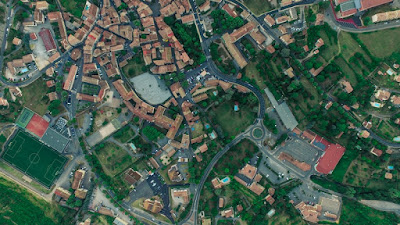Here is an interesting NZ case study1.
The North East of Hamilton has grown like a mushroom over the last 15 years or so. In fact, hardly anyone predicted (including Hamilton City Council) that Hamilton City would move out into the countryside so quickly and as a result push the city boundary out. If you drive up to Sylvester today, there are new houses being built left, right and centre.
The NE of Hamilton is made up of five ‘mesh blocks’. For our purposes we will call them suburbs. They are: Flagstaff, Rototuna, Huntington, Horsham Downs and the newest, Sylvester.
Here is a
summary of the population growth:
2001 = 7,400 2013 = 23,140 203% increase
(I have estimated the population as at 2016 as 26,554 or 258%)
2023 Projection = 34,520 Another 49%
(That would be a whopping 366% increase since 2001 - i.e., in 22 years)
Here is a summary of new (Protestant) churches since 1999-2017:
New Churches started: 10 (i.e., 1 church every 2 years). I have included an older (1918) former Presbyterian church that ceded from the Presbyterian Denomination in about 2003. It is now Independent and has effectively been re-planted. It is now the largest church in the NE of Hamilton by far.
Total weekly worshipping attendance (TWA) for the 9 churches is 1120. Total membership2 is 1,560.
Size range is between 10 and 350. If you take out the two smallest, the size range is 70-350.
6 of the 10 churches above have their own church building.
The most recent new church started was in March 2017—a second New Life church which is rather intriguing.
Other Facts:
2001 = 7,400 2013 = 23,140 203% increase
(I have estimated the population as at 2016 as 26,554 or 258%)
2023 Projection = 34,520 Another 49%
(That would be a whopping 366% increase since 2001 - i.e., in 22 years)
Here is a summary of new (Protestant) churches since 1999-2017:
New Churches started: 10 (i.e., 1 church every 2 years). I have included an older (1918) former Presbyterian church that ceded from the Presbyterian Denomination in about 2003. It is now Independent and has effectively been re-planted. It is now the largest church in the NE of Hamilton by far.
Total weekly worshipping attendance (TWA) for the 9 churches is 1120. Total membership2 is 1,560.
Size range is between 10 and 350. If you take out the two smallest, the size range is 70-350.
6 of the 10 churches above have their own church building.
The most recent new church started was in March 2017—a second New Life church which is rather intriguing.
Other Facts:
- 6 new Early Childhood Centres.
- 3 new state Primary Schools with a combined roll of 2,448 children. That’s a lot of kids by the way.
- Average house price $645K compared to all of Hamilton $429K. Almost $200k higher on average.
- Average household income is $63,600. Hamilton is $64,000 and NZ is $63,800.
My
comments on the above data AND from my own observations: (I used to be a Pastor in Hamilton City and still know most of
the pastors/churches in NE Hamilton).
1. When there is rapid
population growth in an urban area as there has been in NE Hamilton, there ought
be new churches starting and growing rapidly (and existing churches growing
as well).The same has occurred, for example, in North Shore in Auckland, Mt
Maunganui/Papamoa, Bethlehem in Tauranga, Kapiti Coast and now parts of
Christchurch.
2. As is usually the
case, 2-3 churches will be way ahead of the rest in terms of size. As to
why that is, is another discussion I think.
3. I know that the two
largest churches in NE Hamilton have had significant transfer growth.
One of the earliest churches in NE Hamilton was running over 200 people in its
heyday, has lost about 130 people over 5 years or so, mostly to the two largest
churches in this same area.
4. One church that
started in 2006 (11 years ago) now has 180 TWA every Sunday. It is a Brethren
church and in my opinion is a great NZ story.
5. There are many
Christians in NE Hamilton that drive past all these churches and go to a
church in the city. There seem to be quite a few at the church I attend.
6. Clearly, when there is
rapid urban growth new churches should be planted, and I doubt there would be
much disagreement about that. The perennial question is how many new churches
should be planted in a new housing area, and is there an argument to support
the notion that ‘we have enough’, especially given that there are around 20,000
unchurched people in this area?
1. This piece of research has been done by Karyn Woodhouse, my research assistant. A full paper copy of the research can be purchased for $15.00 incl P&P. It is a well-presented document with maps, graphs and tables. It is not available as an E-copy. If you are interested please email karyn@willowcreek.org.nz. All the numbers are from the 2013 Census except the church numbers. We obtained those by phoning everyone.
2. Total number of people who attend at least once a month. Another way of looking at these folks is this: When asked, “Where is your church or spiritual home,” they will name the church being considered. In this case around a 40% increase on TWA; this is pretty much a typical batting average in all of NZ.

